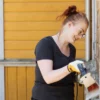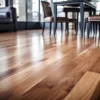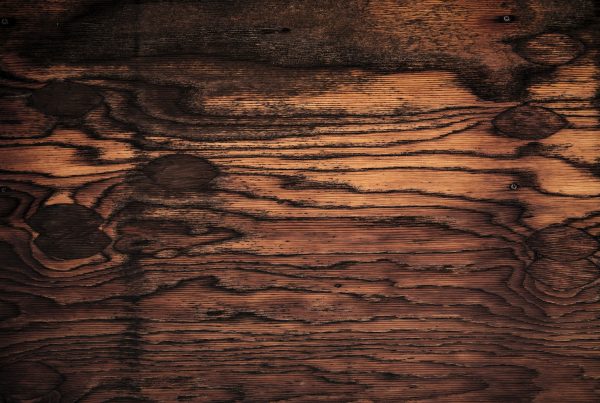Lead paint poses a serious health risk to both people and animals. Ingesting paint chips or dust or inhaling the fumes from lead paint can cause lead poisoning. Lead poisoning causes irreversible damage to both children and adults.
Lead additives in paint were banned in 1978 in the US. Paint manufactured after that date should be free from lead. However, pre-1978 older homes and furniture can have multiple layers of lead paint.
“The probability of finding lead-based paint in your home increases with its age. Homes built between 1960 and 1977 have a 24 percent chance of containing lead-based paint. That number spikes to 69 percent for homes built between 1940 and 1959. Homes that predate 1940 have a whopping 87 percent probability of containing lead-based paint.”
-Drs. Eve Glazier and Elizabeth Ko,
Published: Tue, January 10, 2017 in Newsok.com
Even if only the bottom layer contains lead, you and your family are at risk of exposure. Homeowners must take special precautions to locate and remove all traces of lead paint, while avoiding the release of toxic fumes and dust into their environment.
Is It Lead Paint?
Before you start stripping paint in any building, it is critical to determine if the paint contains lead.
Lead paint is more common in outdoor areas and other areas exposed to weather conditions and excessive wear such as windows, doors, railings, and stairs. Interior woodwork, older furniture and toys may also contain lead paint.
If you have a home that is over 40 years old, there is a high probability that the paint in your home contains lead. Test it! You can purchase a simple DIY lead test kit – LeadCheck Swabs – from your local hardware or paint store for less than $10. These tests are easy and quick to do. They provide results in minutes. This is the most convenient and fastest way to determine whether or not the paint in your home contains lead. Don’t rely on one negative test result to assure you that your home is lead safe. If you get one positive red result anywhere in your house, assume the whole house is painted with lead paint. Be safe and follow lead safe work practices.
There are other tests which are more elaborate and more costly. These involve taking a small paint chip which includes all the paint layers down to the wood and sending it to a lab for analysis. The processing takes days or even weeks depending on the lab. The most expensive ($200-500), reliable, and targeting lead tests are done by licensed Lead Inspectors and their certified laboratories.
If lead paint is discovered, it’s extremely important to protect yourself and your family from exposure. Traditional paint removal methods can be hazardous. Sanding causes lead dust to enter your environment; traditional high heat stripping methods such as heat guns release toxic lead fumes into your home. Fast exterior power washing leaves paint dust in the ground where your pets and kids play. Chemicals create messy waste which is hard to contain and may be toxic themselves. These methods are not recommended for the removal of lead paint.
Speedheater™ Products Remove Lead Paint Safely
Infrared heat stripping using Speedheater™ products removes lead paint safely and efficiently. Speedheaters warm the paint only to the temperature at which it bubbles and slightly smokes. The bubbles indicate that the bottom layer of paint has separated from the wood underneath and it is ready to be easily scraped away. This low heating prevents toxic lead fumes from entering the environment. Paint is removed in large ribbons of soft paint reducing the chance of chips and dust. All layers of paint and varnish are removed with a few strokes of sharp paint scrapers. This creates the perfect surface for a fresh coat of paint. If another layer of paint will be covering the stripped surface, there often is no need for sanding. If fine furniture or interior wood trim is being stripped completely for staining or clear coating, some wet sanding may be done.
Speedheater™ is available in two models: the Speedheater ™ Standard 1100 and the Speedheater ™ Cobra. The Speedheater™ Standard 1100 is ideal for large jobs with lots of flat surfaces. The Cobra enables homeowners to remove paint from tighter spaces. This model also is ideal for use for more detailed paint removal such as on windows, non-flat wood trim, and furniture.
It’s important to note that homeowners must take certain precautions whenever working with lead paint. Always wear protective clothing and a facial mask approved for use with lead paint*. Cover furniture and flooring, contain the paint waste, clean it up daily, and dispose of it and your coverings immediately after the job is complete. We highly recommend that your read more about lead safe work practices at *www.epa.gov/lead.
Please contact us for more information about how our Speedheater™ products allow you to work safely when removing lead paint.






